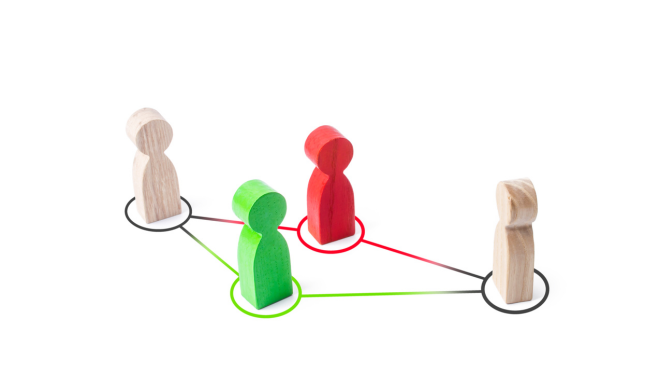Canada’s trust reporting rules changed in 2023, meaning there’s more paperwork if you have a trust, including bare trusts. In this blog, we’ll cover:
- Trusts: the terms you need to know
- What is a bare trust?
- Do you have a trust?
- Taxes and returns for bare trusts
- Trust reporting changes in 2023
- Who is impacted?
Trusts: the terms you need to know
Trust: A trust is like a legal safety deposit box for assets or property managed by one party (the trustee) to benefit another (the beneficiary).
Here are the three people required to have a trust (the reporting entities):
- Settlor: The person who creates a trust by transferring assets into it. They also outline the specific terms and conditions, like how and when assets will be distributed to the beneficiaries.
- Trustee: The trustee is the person appointed by the settlor to hold the trust's assets legally. They're responsible for managing the assets, accounting, filing taxes and ensuring the trust follows the rules set by the settlor and the law, all while looking out for the beneficiaries' best interests.
- Beneficiary: These are the folks chosen by the settlor to benefit from the assets in the trust. They don’t have much responsibility; they collect the money.
The settlor creates the trust, the trustee manages it, and the beneficiaries benefit from it.
What is a bare trust?
Have you ever heard of someone holding sole or joint ownership of a home or bank account on behalf of another, like an aging relative or a minor? That's a bare trust. It's handy for privacy, simplifying transactions, or planning your estate.
Bare trusts are a type of trust where the trustee legally owns the assets, but the beneficiaries have hands-on control over them. They can tell the trustee how to manage the trust and make decisions regarding the assets.
Here's how you can recognize a bare trust: the trustee acts more like an agent for the beneficiaries rather than for the person who set up the trust. The trustee doesn't have much say in what happens with the assets; they simply follow the instructions given by the beneficiaries. From the moment the trust is created, the beneficiaries have full and immediate access to the money and any income the trust generates.
Common examples of bare trusts:
- Investments: Investors choose one person to have legal ownership of the investments or to hold title to a property on behalf of someone else.
- Property title: Children of aging parents may get put on the title of the parents’ house so that the property can transfer directly to the child when the parent dies without going through probate.
We won’t cover testamentary trusts (created when someone dies) or trusts that have always been required to file returns in this article.
Do you have a trust?
Identifying whether you have a trust isn't always straightforward. It is a legal question that is not easy to answer by looking at financials and tax returns. We can file the paperwork with the CRA, but we’re not lawyers.
Here are some signs that you have a trust:
- You receive T3 slips in March each year
- You have trust documents where you’re named as beneficiary or trustee
- You own property but aren’t on the title
- You don’t own property, but you are on the title (probate planning)
- You’re the executor of the estate of someone who has passed
- You’re involved in a joint venture
Taxes and returns for bare trusts
The trustee is responsible for filing an annual T3 return, including Schedule 15, listing the details of the beneficiaries and other reporting entities. The beneficiary, not the trust, taxes all income and capital gains the trust assets generate.
What does a trustee need to report?
Trustees need to report the name, address, date of birth, social insurance number or business number and the country of residence for each of the following reporting entities:
- The settlor of the trust
- Beneficiaries
- Trustee
Trust reporting changes in 2023
Before Dec. 31, 2023, a trust wasn’t required to file a T3 income tax return unless it owed tax or sold its assets.
Now, most trusts must file yearly, even if no income was earned and no activity was observed. The deadline to submit the required forms for the 2023 tax year is April 2, 2024.
What’s the cost of not filing?
A penalty of $25/day for each unfiled day, up to $2,500! On March 12, 2024, the CRA announced it would not impose these late filing fines on new bare trusts this year.
Who is impacted?
This will impact anyone whose names were added to a family member’s home title or financial accounts, even if a taxpayer didn’t intentionally or formally create a trust.
Is anyone exempt?
Trusts are exempt from reporting if they meet one of the following:
- The trust existed for less than three months by the end of the year.
- All assets the trust holds are publicly listed shares on a designated stock exchange.
- The trust held no more than $50,000 in assets throughout the year (cash and publicly listed shares designated stock exchange).
Foreign trusts
The changes also extend to certain foreign trusts with ties to Canada. Nonresident trusts with no filing obligation may now need to file an annual tax return in Canada if they meet certain conditions, like having a Canadian resident as a beneficiary or holding taxable Canadian property.
These changes should make trust arrangements more transparent and accountable, ensuring the accurate reporting and taxation of assets held in trusts. If you find these changes confusing or have any questions, don't hesitate to reach out. Let us handle your corporate and personal taxes this year, and enjoy a stress-free tax season.







